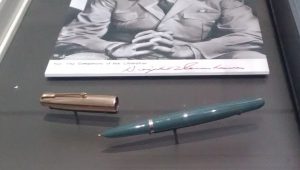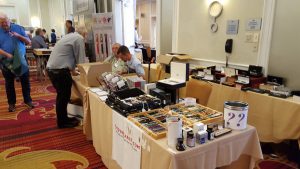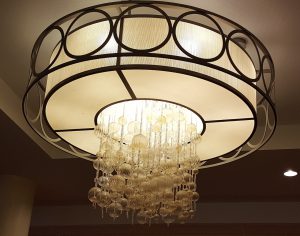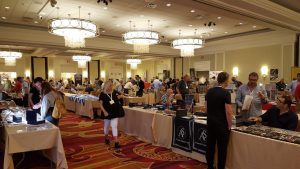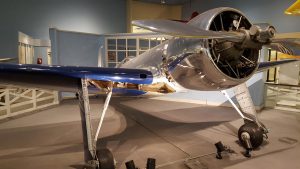Five year ago I wrote a story about the pens used to end World War II. Two years later, some historians came to add more details to the piece. Through it all one mystery remained…
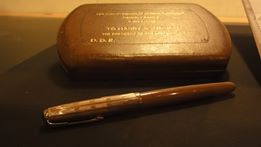
Geoff Parker took this photo of the actual Parker 51 his grandfather gave to Gen. Dwight Eisenhower that was used to sign the armistice with Germany ending World War II in Europe. It is preserved in Abilene, Kan., at the Eisenhower Presidential Library & Museum.
While visiting the Musee de l’ Armee in Paris of 2010, I spotted a Parker 51 that once belonged to General Dwight D. Eisenhower. At the time, I presumed it was the pen he used while signing Germany’s surrender to the Allies. Several long blog posts later, we know that Eisenhower didn’t want to be in the same room with the Germans and gave his staff several Parker 51s to sign the surrender documents. These 51s were given to him directly by Kenneth Parker, and Eisenhower in turn presumably gave them to Truman, Churchill and Parker as the instruments that ended WWII. We have a picture of the pen he gave Truman that now rests in Eisenhower’s Presidential Library.
Yet…what about that Parker 51 I saw in the museum? Even the museum’s staff wrote me claiming no knowledge of the pen, and I didn’t have the presence of mind in 2010 to get a photo.
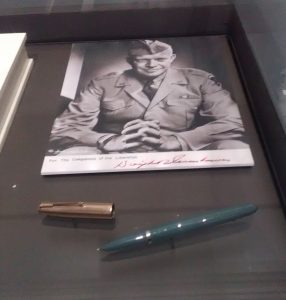
Loyal reader Pascal L. found the Parker 51 in the Musee de l’Armee in Paris that I discussed in my earlier blog posts.
Enter my new favorite Frenchman: Pascal L. Pascal read my post, visited the museum and found the pen I saw in the museum’s collection dedicated to the French Resistance! He sent me photos!
The Parker 51 is green (Technically, it is the teal model but it looks green to me and my memory from 8 years ago.) and gold. It is displayed with an autographed photo of Ike that is dedicated: “For the companions of the Liberation.”
The plot thickens!
Look closely at the pen. Pascal was quick to point out that it is an aerometric-filler. Clearly, this pen could not have been at the signing in 1945. This style of Parker 51 wasn’t released until 1949.
Pascal reached out to the museum again and finally solved the mystery! It is really important to note that the pen was in the section dedicated to the French Resistance. This is what Pascal wrote me: “On March 6, 1972, Mrs. [Mamie] Eisenhower asked General Robert L. Schulz, General Eisenhower’s personal assistant from 1947 to 1969 to send the Parker 51 to Chancelier Claude Hettier de Boislambert. (This man is the creator of the Museum of the Order of Liberation.) The fountain pen has been placed in the collection.”
Thus, the pen was actually given away 3 years after President Eisenhower’s death. The pen doesn’t have the pointed tail of a 1972 Parker 51 and looks as if it could have once been in Ike’s possession, as he was known to have been replete with Parker 51 fountain pens for various giveaways and special presentations.
I want to give a very special merci beaucoup to Pascal L. for all of his very hard work in finally bringing this story to a close with a mystery solved.


 Shopping Cart
Shopping Cart




